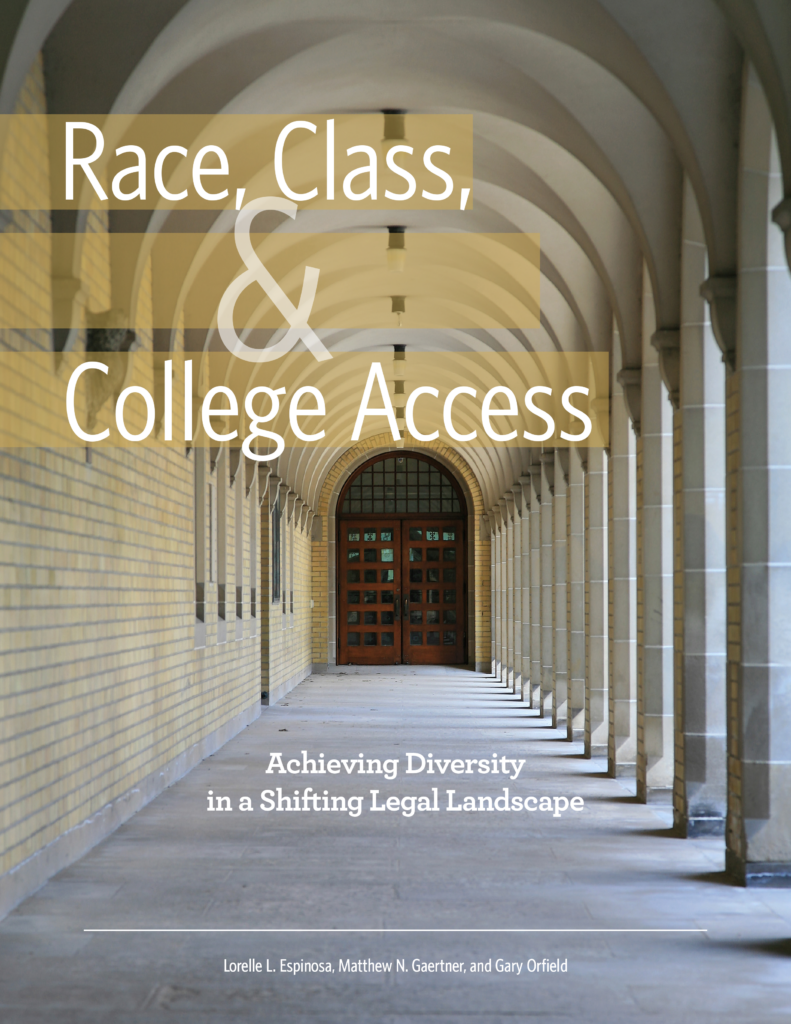Executive Summary
Headlines surrounding the consideration of race and ethnicity in college admissions are often incomplete and ill-informed, promoting polarization and deflecting attention from practices that promote racial, ethnic, and socioeconomic diversity in higher education. As colleges and universities seek to educate an increasingly diverse American citizenry and achieve the associated educational aims, it is imperative that post-secondary leaders, policymakers, researchers, and members of the media better understand the work and challenges facing institutions in this current legal climate.
This report attempts to broaden that understanding and further much-needed dialogue on how institutions can best respond to a shifting policy and legal landscape at a time when access to postsecondary education has never been more vital and our American citizenry never so diverse. We examine contemporary admissions practices at four-year colleges and universities across a wide range of selectivity in the context of recent legal challenges to race-conscious admissions, including the pending U.S. Supreme Court case Fisher v. University of Texas at Austin.
Findings are based on responses to a first-of-its-kind national survey of undergraduate admissions and enrollment management leaders administered in 2014–15 by the American Council on Education (ACE). Our data reflect responses from 338 nonprofit four-year institutions that collectively enrolled 2.7 million students and fielded over 3 million applications for admission in 2013–14. A full 60 percent of the most selective institutions—those admitting 40 percent or fewer applicants—consider race in admissions.
Key Takeaway 1
The most widely used diversity strategies receive the least attention. Three of the five most widely used strategies to support racial, ethnic, and socioeconomic diversity involve student outreach and recruitment:
- Targeted recruitment and outreach to encourage racial/ethnic minority students to apply (78 percent of institutions)
- Enhanced recruitment and additional consideration for community college transfers (76 percent of institutions)
- Targeted recruitment and outreach to encourage low-income and/or first-generation students to apply (71 percent of institutions)
Despite wide media and research attention, the least widely used strategies include:
- Reduced emphasis on legacy admissions (24 percent of institutions)
- Test-optional admissions (16 percent of institutions)
- Percentage plans (13 percent of institutions)
If researchers, policymakers, and the press want to align more closely with prevailing practice—and we believe that they should—then the focus of their attention and coverage will need to shift.
Key Takeaway 2
Striving for racial/ethnic student body diversity is not an “either-or” but a “both-and” proposition.
Institutions that consider race in admissions decisions use other race-conscious and race-neutral diversity strategies more often and find them more effective than institutions that use race-neutral strategies alone. Race-conscious and race-neutral approaches can and do coexist and are often used outside of the admissions decision. In addition to a holistic application review, some of the most widely used and effective diversity strategies at institutions that consider race include:
- Targeted recruitment and yield initiatives to encourage racial and ethnic minority students to apply and enroll (two strategies)
- Targeted recruitment and yield initiatives to encourage low-income and/or first-generation students to apply and enroll (two strategies)
- Bridge or summer enrichment programs for admitted students
- Targeted scholarships/aid awards for disadvantaged, e.g., low-socioeconomic status (SES) students
Strategies not widely used but perceived as effective by the majority of institutions that use them include test-optional admissions, reduced emphasis on SAT/ACT scores, and provisional/conditional admission.
Key Takeaway 3
Reactions to the 2013 U.S. Supreme Court Fisher decision are still evolving, and more research is needed. Post-Fisher changes in institutions’ focus on admissions/enrollment data, admissions factors, and diversity strategies have been modest (among those that consider race). The most change occurred in diversity strategies pursued with increased importance on the recruitment of community college transfers (23 percent of institutions) and low-SES students (22 percent of institutions).
Regarding the Fisher decision:
- Eighty-nine percent of participants responded that they were familiar or very familiar with the requirements and implications of the ruling.
- The most popular sources of information/guidance for those very familiar with the ruling were professional organizations (100 percent), an institution’s general counsel (80 percent), media coverage (68 percent), and peer institutions (59 percent).
Institutions across the selectivity spectrum are hungry for research and guidance in the Fisher context. When presented with four areas for additional research or guidance that could be the most helpful post-Fisher, participants prioritized them this way:
- Research on the educational impact of campus diversity (58 percent overall; 74 percent of more selective private institutions)
- Research and guidance on what constitutes a “critical mass” of diverse students within their institutional context and how to achieve it (54 percent overall; 82 percent of more selective public institutions)
- Research on the diversity effects of admissions strategies where race-conscious admissions practices are prohibited (42 percent overall; 64 percent of more selective public institutions)
- Methodological research and guidance on assessing the diversity effects of alternatives to race-conscious admissions (38 percent; 69 percent of more selective private institutions)
In compliance with the UC Open Access Policy, this report has been made available on eScholarship:
